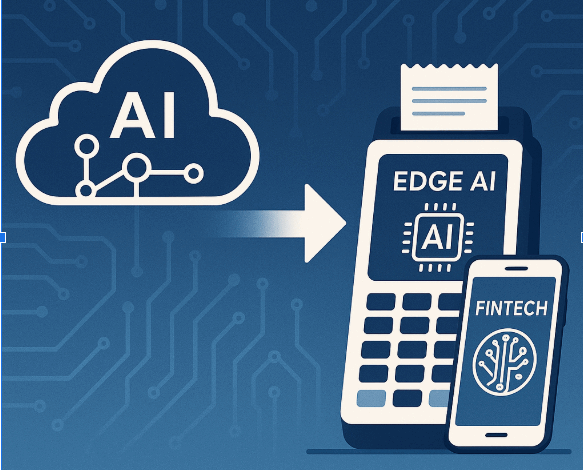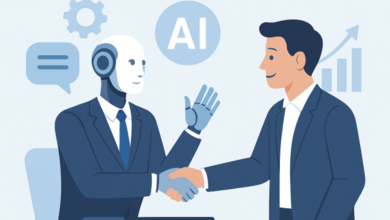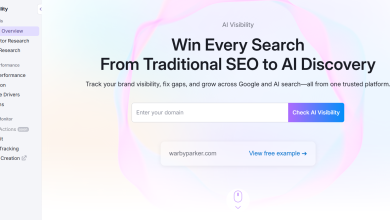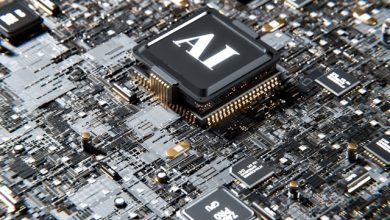
Introduction: A Shift Is Underway
Artificial Intelligence (AI) has become an essential part of the financial technology (fintech) ecosystem—enabling fraud detection, risk scoring, customer personalization, and compliance automation. Traditionally, these AI models have operated in the cloud, relying on centralized infrastructure to process massive datasets and deliver insights.
However, a significant shift is underway. As fintech moves closer to the edge—literally—we are seeing growing momentum toward on-device and locally executed AI models. The need for lower latency, greater data privacy, cost savings, and regulatory compliance is pushing fintech leaders to rethink their cloud-only architecture.
Why Cloud-Only AI Isn’t Enough Anymore
Cloud-based AI platforms remain essential for training and orchestrating large models. But for real-time use cases like in-store crypto payments, ATM fraud detection, and onboarding identity verification, cloud dependency becomes a bottleneck.
Here’s why:
- Latency matters. In real-time financial transactions—especially those happening at the Point of Sale (POS)—even a 2–3 second delay in AI response can break the user experience.
- Regulatory concerns. Sending Personally Identifiable Information (PII) to third-party cloud servers—especially across borders—raises compliance red flags in jurisdictions like the EU, UK, and some US states.
- Offline unavailability. Many financial interactions happen in environments with unstable or no connectivity (e.g., field banking, rural microloans). Relying solely on cloud inference makes these services brittle.
Our work on PDX Beam, a crypto payment platform for retail, showcased this challenge firsthand. Real-time conversion of crypto to fiat at a POS terminal couldn’t afford round-trip delays to the cloud for every transaction. A different approach was needed.
What Is Edge AI and Why Does It Matter?
Edge AI refers to running machine learning models locally—on a mobile device, embedded system, POS terminal, or edge gateway—without needing to send data to the cloud.
At its core, this means on-device inference:
- A user takes a selfie → AI verifies identity → decision made instantly on-device
- A transaction is initiated → AI model checks for anomalies → proceeds or flags instantly
Edge AI leverages tools like:
- ONNX Runtime, TensorFlow Lite, Core ML, or TensorRT for optimized deployment
- Model quantization, distillation, and pruning to reduce model size
- Hardware accelerators like Apple Neural Engine, Google Edge TPU, or even GPU-powered POS systems
The Fintech Edge: Key Benefits of Local AI
- Sub-Second Speed:
Edge AI can deliver AI decisions in milliseconds—essential for fraud detection, QR validation, and payment confirmation. - Data Privacy & Compliance:
Sensitive customer data stays local. There’s no data transmission to external servers, which simplifies GDPR and CCPA compliance. - Cost Efficiency:
By reducing reliance on cloud compute and bandwidth-heavy inference requests, organizations save on operational costs. - Offline-First Resilience:
Transactions and interactions can continue even if the device is offline, syncing results when a connection is restored.
Challenges on the Road to the Edge
Transitioning to edge AI isn’t without hurdles:
- Limited Resources: Devices like POS terminals or kiosks often have minimal compute and memory.
- Model Optimization Complexity: Compressing a 300MB fraud detection model into a 20MB runtime without losing accuracy is a difficult task.
- MLOps at the Edge: Managing versioned models, secure updates, rollback strategies, and telemetry across thousands of distributed devices is a new operational frontier.
In PDX Beam, we approached this with:
- Lightweight quantized fraud detection models trained in the cloud, deployed via containerized edge runtimes
- Message queues like MQTT for syncing transactional events with backend analytics when online
- Delta updates to AI models instead of full replacements, saving bandwidth and update time
The Hybrid Future: Cloud + Edge in Harmony
Rather than replacing cloud AI, edge AI complements it—creating a hybrid AI architecture:
- Cloud: Used for training large foundational models, analytics, and orchestration
- Edge: Executes those models in real-time, locally, and securely
The cloud remains the backbone for MLOps, centralized monitoring, and retraining loops. The edge handles inference, caching, and user interaction.
Technologies like federated learning, TinyML, and on-device retraining are further enabling this fusion.
Use Cases Already in the Wild
Real-Time Crypto POS Payments
PDX Beam uses edge AI to validate transactions, match QR codes to token types, and detect fraudulent behavior—without depending on an internet connection.
On-Device KYC Verification
Face detection, document OCR, and liveness checks done entirely on mobile devices. Platforms like Onfido and IDnow are moving in this direction.
AI-Driven ATM Security
AI detects shoulder-surfing patterns or unusual withdrawal behavior in real-time—without sending footage to the cloud.
Embedded AI in Banking Apps
Apps like Revolut and Square Cash are beginning to run budget insights, expense categorization, and fraud alerts locally.
Conclusion: The Edge Is Not a Trend—It’s an Imperative
As fintech continues to push the boundaries of real-time experience, compliance, and personalization, it’s clear that AI must move closer to the user.
Local and on-device AI is not just about performance—it’s about trust, control, and resilience. For financial leaders, now is the time to future-proof your AI architecture by embracing this hybrid, edge-centric model.
Those who prepare today will not just gain competitive advantage—they will define the next wave of digital finance.





